Are Electric Vehicles Less Prone To Repairs
Past: Byron Mathioudakis
How does servicing an electric machine compare to servicing a regular machine?
One of the most touted advantages of owing an electrical vehicle (EV) is the lower cost of running it.
We're not just talking nearly the generally lower price of electricity versus petrol or diesel that's required per-kilometre for an internal combustion engine (Ice) vehicle.
Servicing can be cheaper too. At times, much cheaper. This is due to there existence far fewer moving parts in an EV's electric motor(s) compared to an Ice. At the aforementioned fourth dimension though, EVs tin can wear tyres more apace due to their heavier mass and the loftier torque outputs of their electric motors.
RELATED: What does it cost to charge an electric car? »
RELATED: Getting into a cheaper electric car »
Both should be taken into consideration if y'all're in the market for an EV, given the buying expenses can exist spread differently compared to servicing of Ice vehicles.
This doesn't mean EVs don't require regular servicing and maintenance, it simply means there are some differences, and similarities.
So let'due south outline the similarities every bit well as differences, to improve empathise what is involved in maintaining an EV.
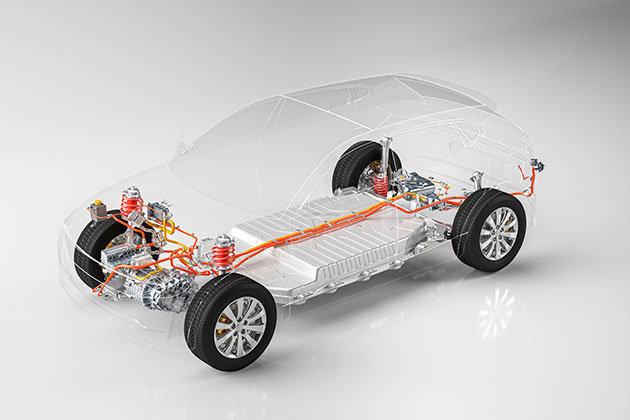
Differences between servicing an electrical and a non-electric car
For the purposes of simplicity and clarity, we'll talk about a full bombardment EV, as opposed to an EV/Ice combination known as a hybrid.
For many people, what'southward nether the bonnet is a bit of a mystery.
Some serviceable items in EVs are much like those of a normal Ice vehicle, such as the 12-volt battery, the fluid reservoirs, the brakes and even the pause.
Under the bonnet though, things look radically dissimilar.
The centre of an EV, the electric motor, is an enclosed unit that needs no regular maintenance itself and can terminal betwixt 15 and 20 years if used within normal conditions. Information technology does non crave the spark plugs, leads, fuel and engine air filters, and belts required in an Water ice machine to proceed it going. All these crave regular changing in an ICE and that adds upwardly significantly as the vehicle ages.
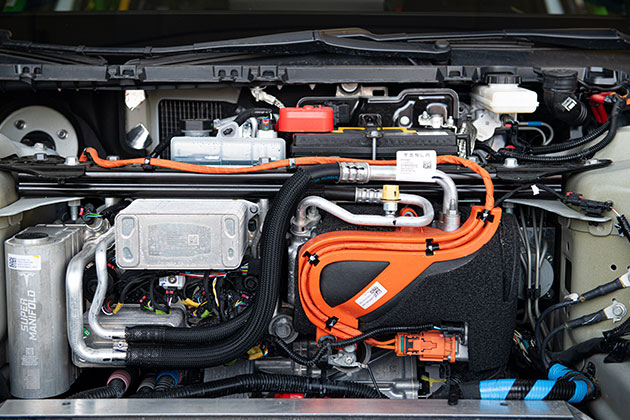
However, external elements like excessive dust, vibration or heat/cold tin bear upon an electric motor's internals. This ways that EV owners must ensure that the electric motor's support systems, including related fans and cooling fluids, are serviced on fourth dimension.
In an EV, the main traction battery stores electricity, just as the fuel tank in an ICE vehicle stores the free energy contained in the fuel. But don't confuse an EV's main traction battery with a regular 12V car battery, which EVs besides have.
When the driver presses downwardly on the accelerator pedal, a controller sends electricity via an inverter, which changes straight electric current (DC) into alternating current (AC), before it is then sent to the electric motor. That electrical energy is then converted into mechanical energy that rotates the electric motor'due south rotor, which drives the vehicle's transmission (also known as the reducer or reduction gear) that turns the wheels.
An EV'south traction battery pack
The traction battery packs in an EV are currently nearly all lithium-ion based. As with your smartphone battery, they start to degrade over time, and this shows up equally reduced distance range between recharges. But they ordinarily have a serviceable life of over a decade if properly maintained.
RELATED: What happens to old electric car batteries? »
About manufacturers provide an 8 yr/160,000km traction battery pack warranty, guaranteeing at least 70 per cent capacity after that period of time/mileage.
Beware that some are for longer periods and some a bit shorter. Check the fine print. The Renault Kangoo and now-discontinued Zoe EVs only had v year/150,000km warranties, while Tesla's bombardment warranty, in terms of mileage, varies depending on the model, reaching up to 240,000km.
Most batteries practice last a lot longer, especially if they're charged regularly and aren't limited to a constant cycle of full-depletion/recharge. Manufacturers suggest that varying the charging amount volition extend your traction battery pack'south life, so don't always run it down to empty.
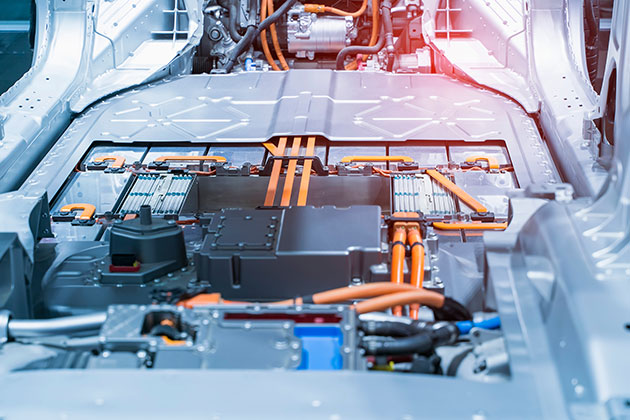
Frazzle systems
You won't have to worry about exhaust pipes, mufflers, manifolds, particulate filters, catalytic converters or other emissions-related items on an EV: they simply aren't fitted.
Similarities betwixt servicing an electric and a non-electric motorcar
They might exist different in size or specification, only there are still plenty of shared parts betwixt an EV and an ICE vehicle that demand scheduled servicing.
These include:
- Regular almanac or mileage-based electrical diagnostics that check the vehicle system'south health, be it EV or ICE vehicles.
- Cooling systems that require fans and fluids can crave top-up and maintenance.
- 12-volt car battery that powers systems like central locking, in-car climate control and multimedia systems amongst other items.
- Brake pads, discs, calipers, brake fluid and other related items that are expendable over time and distance travelled, meaning that these too need routine check-ups and maintenance.
- Windscreen glass, wiper arms, wiper blades, wiper fluids and related rubbers degrade or disappear over fourth dimension, so these also fall under regular servicing.
- Safety systems need to be monitored, from the stability and traction control software and hardware, through to the airbags, since sensors can fail.
- Air filters for the car's cabin require replacement to help proceed the air clean within, especially in higher-end vehicles that accept specialised equipment to screen out airborne toxins.
- Interruption components are a large-ticket detail shared by EVs and Water ice vehicles. Whether we're talking about abiding velocity joints, shock absorbers, springs, necktie rod ends, brawl joints and other suspension items, they exercise wear out, or require new parts to stay in tip-top condition. Peradventure not initially, but certainly within v or and then years of driving for some items.
- Tyres wear over distance and can also harden over time, and then need to be rotated, swapped around or replaced with regularity. And of course, all cars notwithstanding need to have the correct air pressures in their tyres.
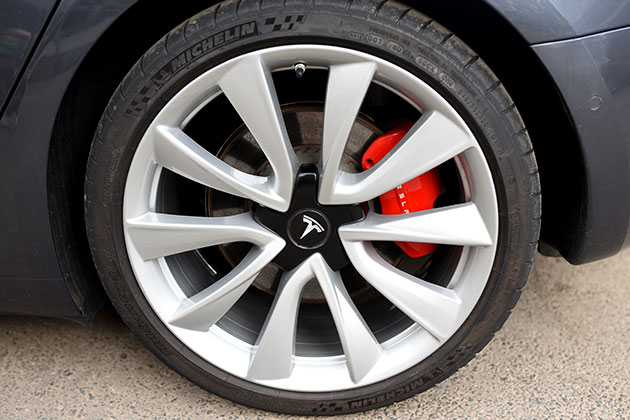
How ofttimes do yous need to service an electrical motorcar?
About, only non all, vehicle service schedules are set at 12 months or between ten,000km and 15,000km. Some are less and a small handful are for longer times and distances betwixt visits.
The all-time rule of pollex is an almanac check-up, or sooner if you clock up more kilometres than the manufacturer'due south service flow allows.
This is to ensure that – be it EV or ICE – items similar filters, tyres and sensors are in tip-top status for the next 12 months. After all, no vehicles are manufactured in Australia anymore, and most come up from climates that may not be as extreme or environment as demanding as ours.
These accept a toll on a car over time.
Also, being an EV, make sure that the garage or service centre you employ is equipped and trained to service your vehicle.
RAC Motorcar Services can also support your electric vehicle repair and maintenance needs.
Cost of servicing an electric car
Just equally your regular ICE vehicle's servicing costs differ dramatically according to brand, complexity, technologies, size, vehicle age, price and other factors, the same besides applies to EVs. The variation tin can be endless. A Toyota costs less to service and maintain than a Mercedes-Benz.
So, to demonstrate the differences between the ii propulsion types, allow's apply the case of the popular Hyundai Kona pocket-sized SUV, which tin exist had in an ICE or EV version.
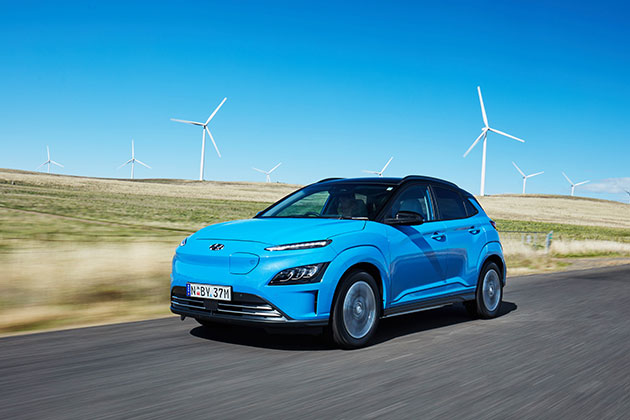
For fairness, we're comparing the $31,600 Kona Aristocracy 2.0-litre 4-cylinder front-wheel drive with the $54,500 Elite Electric Standard Range forepart-bicycle bulldoze equivalent.
Both recommend 12-month/15,000km servicing intervals, with fixed-price servicing quoted over a v-twelvemonth period from a Perth metropolitan dealership.
Kona Elite 2.0L petrol
Kona Elite Electrical EV
Breaking down these service costs, here's what is involved at the 36-month/45,000km service interval for the Kona Elite Electrical EV, costing $165:
Acquit out complete global diagnostic system cheque, cheque operation of instrument warning lights, gauges and illumination, check vehicle for outstanding recalls or service campaigns, audit airbag and pre-tensioners, inspect air conditioner refrigerant/compressor, inspect 12V auxiliary battery terminals and condition, inspect bolts and nuts on chassis body, inspect brake fluid, audit restriction hoses, lines and connections, inspect restriction pedal, inspect climate control air filter, inspect cooling organisation level and hoses, inspect disc brakes and pads, audit drive shafts and boots, inspect front suspension ball joints, inspect functioning of lights/wipers and controls and accessories, inspect park brake, inspect reduction gear fluid, inspect seat chugalug webbing and operation, inspect steering rack and all linkage components and boots, inspect tyres including pressure and tread wear, lube door, boot, bonnet hinges and latches, and rotate wheels forepart to rear.
For the Kona Aristocracy 2.0L petrol costing $364:
Most of the above, plus perform fuel system treatment, replace engine oil and filter, supervene upon fuel filter, inspect fuel lines, hoses and connections, inspect drive belts, inspect drive shafts and boots, inspect fuel tank air filter, audit fuel vapour hoses and inspect fuel cap.
The Kona Electric has fewer parts that require servicing or replacement, adding to its lower cost. The parts that do need servicing/replacing are mostly on a par price-wise with the ICE version.
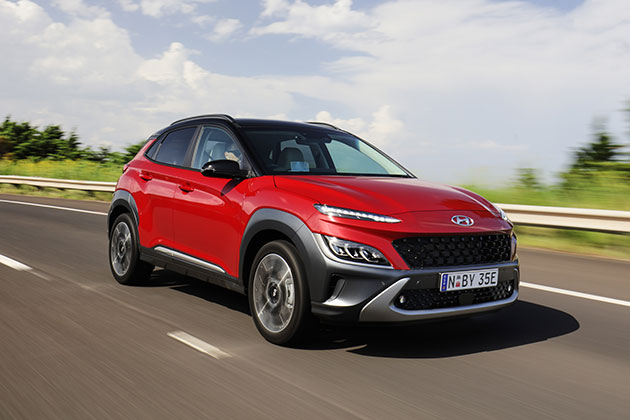
DIY
If yous're handy around the garage, then by all means, check your EV's radiator coolant levels (where fitted and if attainable), tyres, wipers and lights.
Nevertheless, for the diagnostics testing, software updates, filters and other electrical components, it'south best to stick with the service providers offer servicing that can be washed as specified by the manufacturer – a requirement that includes trained technicians. This does not accept to be done at a dealer, simply by trained people, at the correct service intervals using appropriate quality parts and servicing equipment.
Summary
Overall, EVs are cheaper to run and service than an equivalent Ice vehicle.
Plus, as nosotros move to increased EV take-up, broader EV infrastructure and greater buying incentives in terms of taxes, parking and registration, it may become even more than affordable to own and run an EV.
Peculiarly if Australia eventually follows some other countries' policies of banning the auction of new ICE vehicles after 2030. Whichever fashion you look at it, EVs are hither to stay.
Save on car servicing
RAC members save 10% on labour at RAC Machine Services' 9 service centres.
Find out more
Concluding updated: Nov 2022
Are Electric Vehicles Less Prone To Repairs,
Source: https://rac.com.au/car-motoring/info/electric-car-service
Posted by: grahamfackably.blogspot.com


0 Response to "Are Electric Vehicles Less Prone To Repairs"
Post a Comment